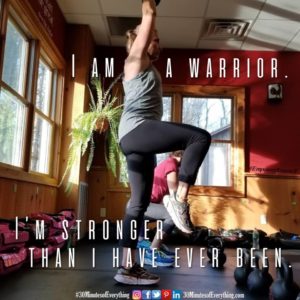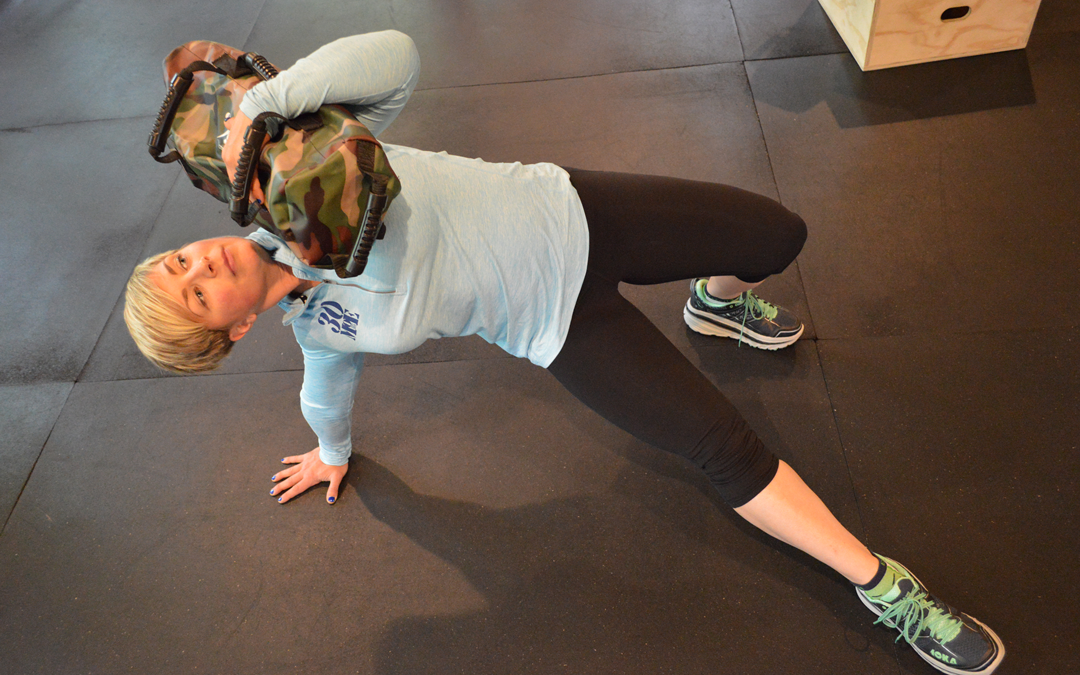Someone asked why we don’t do any crunches or sit ups in class anymore. Because I now know better. Not sarcastic, but true. The gold standard ab exercise used to be crunches, but then came the concept of the core. Now we know that the core functions more to help anti-rotation (twisting) of the trunk vs flexion of the trunk (crunching). The long sought after six-pack is more about clean eating than doing a zillion crunches or sit ups. Your abs are just your abs. They’re the muscles that make up the front & side area of your belly (for lack of a better word). They help you bend over and rotate. Beyond that, they’re not so functional in daily tasks that require you to do more than bend over (because you have to stand back up again, right?). Whereas, your CORE is a much bigger area! Your core covers the area from the rib cage down to your glutes on all sides of your body and incorporates your back muscles. The ENTIRE middle of your body is your core. This area works together to keep you upright, to resist motion so you don’t fall over, to bend over AND stand back up again, to rotate, to walk/run efficiently, etc. Because of this, your core is so much more important than your abs. Sure, if you just want to stand in the mirror and flex your six pack – go right ahead and crunch. However, also be prepared for some back pain down the road!
 The reasoning behind this shift in core emphasis vs the abs is the ever increasing incidence of low back pain. As more research is published, the link between your core and low back pain is astounding and definite. Physical therapist, Sahrmann, states, “during most daily activities, the primary role of the abdominal muscles is to provide isometric support and limit the degree of rotation of the trunk…A large percentage of low back problems occur because the abdominal muscles are not maintaining tight control over the rotation between the pelvis and the spine at the L5- S1 level.” Basically, we need a stronger core to counteract rotational forces – our body turning. This we accomplish by training rotational movements.
The reasoning behind this shift in core emphasis vs the abs is the ever increasing incidence of low back pain. As more research is published, the link between your core and low back pain is astounding and definite. Physical therapist, Sahrmann, states, “during most daily activities, the primary role of the abdominal muscles is to provide isometric support and limit the degree of rotation of the trunk…A large percentage of low back problems occur because the abdominal muscles are not maintaining tight control over the rotation between the pelvis and the spine at the L5- S1 level.” Basically, we need a stronger core to counteract rotational forces – our body turning. This we accomplish by training rotational movements.
When your body works to resist rotation and gain stability and control, you are really using your lats, abdominal muscles, and glutes. It’s a team effort that helps us move effectively and efficiently. In the picture, our client is grabbing the floor with her toes, squeezing her glutes which tie into her lats, and bracing her core to maintain her balance. Muscular team work!
All training is a progression, like the 30MoE program. There is a reason why week 1 feels “easier” than week 8. We need to establish a base before we challenge your system with complex movements. WATCH THE VIDEO HERE to get a detailed explanation by Jessica Bento. My goal is for you to understand why we progress movements in the way that we do and why your core is so valuable as an anti-rotation muscle, not flexion. So kick those crunches to the curb and let’s focus on your real-world functional strength. The next time you want to substitute a core movement for something else, try a dead bug, glute max bridge with the sandbag, alternating side planks, or an awesome bird dog. Any of those are way better than a crunch and will do way more for you in daily life!
This program aims to give you the best workout possible and have you work as hard as you can with proper form. As we learn new information, your training improves – always.
In a nutshell, that’s why we don’t just work your abs. We want the total package!

